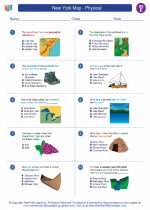Rosh Hashanah: The Jewish New Year
Rosh Hashanah, which translates to "head of the year" in Hebrew, is the Jewish New Year. It is a time of reflection, prayer, and celebration for the Jewish community. The holiday falls on the first and second days of the Hebrew month of Tishrei, which usually occurs in September or October on the Gregorian calendar.
Significance of Rosh Hashanah
Rosh Hashanah is a time for introspection and repentance, as it marks the beginning of the Ten Days of Repentance, culminating in Yom Kippur, the Day of Atonement. It is believed that on Rosh Hashanah, God judges all living beings and determines their fate for the coming year.
During Rosh Hashanah, the shofar, a ram's horn, is blown as a call to repentance and a reminder of the importance of the holiday. The shofar is sounded 100 times over the course of the two days of Rosh Hashanah.
Traditions and Customs
- Tashlich: On the afternoon of the first day of Rosh Hashanah, it is customary to perform the Tashlich ritual, where individuals symbolically cast their sins into a body of water, such as a river or lake, to start the new year with a clean slate.
- Prayers and Services: Special Rosh Hashanah prayers, including the blowing of the shofar, are recited in synagogues. The holiday meals also include specific blessings and customs, such as eating round challah and apples dipped in honey to symbolize a sweet new year.
- Reflective Practices: Many individuals engage in personal reflection, seeking forgiveness from those they have wronged and making amends before the Day of Atonement, Yom Kippur.
Study Guide
1. What is the literal translation of Rosh Hashanah?
The literal translation of Rosh Hashanah is "head of the year" in Hebrew.
2. When does Rosh Hashanah typically occur on the Gregorian calendar?
Rosh Hashanah usually occurs in September or October on the Gregorian calendar.
3. What is the significance of the shofar during Rosh Hashanah?
The shofar is blown as a call to repentance and a reminder of the importance of the holiday. It is sounded 100 times over the course of the two days of Rosh Hashanah.
4. What is the Tashlich ritual and when is it typically performed?
The Tashlich ritual is performed on the afternoon of the first day of Rosh Hashanah, where individuals symbolically cast their sins into a body of water to start the new year with a clean slate.
5. What are some traditional Rosh Hashanah foods and their symbolic meanings?
Traditional Rosh Hashanah foods include round challah and apples dipped in honey, symbolizing a sweet and fruitful new year.
Use this study guide to enhance your understanding of Rosh Hashanah and its significance in the Jewish tradition.
.◂Social Studies Worksheets and Study Guides Fifth Grade. New York Map - Physical

 Worksheet/Answer key
Worksheet/Answer key
 Worksheet/Answer key
Worksheet/Answer key
